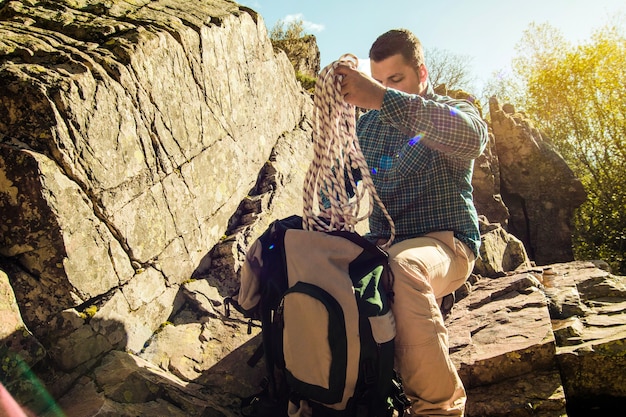Introduction to Extreme Adventure Travel
Extreme adventure travel is not for the faint of heart. It’s a thrilling subset of tourism that attracts adrenaline junkies, thrill-seekers, and those looking to push their physical and mental boundaries to the absolute limit. Unlike traditional vacations, extreme adventure travel involves high-risk activities in some of the world’s most challenging and remote environments. From scaling treacherous mountain peaks to diving into unexplored underwater caves, extreme adventure travelers seek experiences that test their endurance, courage, and survival skills.
The allure of extreme adventure travel lies in its ability to offer unparalleled excitement and a profound sense of accomplishment. It’s about conquering fears, discovering hidden strengths, and experiencing the raw beauty of nature in its most untamed forms. As this niche continues to grow, more and more destinations are catering to the desires of extreme adventure seekers, offering unique and heart-pounding experiences that can’t be found in typical tourist brochures.
Popular Extreme Adventure Travel Activities
1. Ice Climbing in Patagonia
Patagonia, straddling Chile and Argentina, is a mecca for ice climbing enthusiasts. The region’s massive glaciers and ice fields provide the perfect playground for those looking to scale vertical ice walls. Climbers face challenges such as unpredictable weather, crevasses, and the physical demands of climbing in sub-zero temperatures. The reward? Breathtaking views of pristine wilderness and the satisfaction of conquering some of the world’s most formidable ice formations.
2. Base Jumping in Norway
For those who find skydiving too tame, base jumping offers the ultimate free-fall experience. Norway’s fjords, with their sheer cliffs and stunning vistas, have become a hotspot for this extreme sport. Jumpers leap from towering cliffs, relying on their skills and a single parachute to land safely. The Kjerag Mountain in Lysefjorden is particularly popular, offering a 1,000-meter drop that provides both spectacular views and an intense adrenaline rush.
3. Cave Diving in Mexico’s Cenotes
The Yucatan Peninsula in Mexico is home to an extensive network of underwater caves and sinkholes known as cenotes. Cave diving here is considered one of the most dangerous yet rewarding underwater activities. Divers navigate through narrow passages, dark chambers, and crystal-clear waters, exploring an otherworldly subterranean landscape. The challenges include managing limited air supply, avoiding disorientation, and dealing with potential equipment failures in an environment where a quick ascent to the surface is not always possible.
4. Volcano Boarding in Nicaragua
Cerro Negro, an active volcano in Nicaragua, offers thrill-seekers the unique opportunity to board down its ash-covered slopes. Participants hike to the summit carrying specially designed boards, then plummet down the steep, black slopes at speeds of up to 95 km/h. The combination of heat, ash, and velocity makes this an exhilarating and distinctly risky activity that can’t be experienced anywhere else in the world.
5. Heli-Skiing in Alaska
For extreme skiers and snowboarders, heli-skiing in Alaska represents the pinnacle of powder pursuits. Helicopters drop adventurers on remote, untouched mountain peaks, where they carve their way through pristine snow in some of the most challenging terrains on Earth. The Chugach Mountains are particularly renowned for their steep chutes, vast glaciers, and deep powder. Skiers must be prepared for avalanche risks, rapidly changing weather conditions, and the physical demands of skiing in backcountry terrain.
Preparing for Extreme Adventure Travel
 Embarking on extreme adventure travel requires meticulous preparation. It’s not just about booking a flight and packing a bag; it’s about ensuring you have the skills, knowledge, and equipment necessary to survive and thrive in challenging environments.
Embarking on extreme adventure travel requires meticulous preparation. It’s not just about booking a flight and packing a bag; it’s about ensuring you have the skills, knowledge, and equipment necessary to survive and thrive in challenging environments.
Physical Preparation
Extreme adventures demand peak physical condition. Depending on the activity, you may need to focus on building endurance, strength, flexibility, or a combination of all three. For example, preparing for high-altitude mountaineering might involve months of cardio training, strength exercises, and acclimatization hikes. It’s crucial to start your fitness regimen well in advance of your trip to ensure you’re ready for the physical challenges ahead.
Mental Preparation
The mental aspect of extreme adventure travel is just as important as the physical. You need to be prepared to face fear, make quick decisions under pressure, and maintain focus in potentially dangerous situations. Techniques such as visualization, meditation, and stress management can be valuable tools. Many extreme adventurers also recommend studying the experiences of others who have undertaken similar challenges to mentally prepare for what lies ahead.
Skill Acquisition and Training
Most extreme adventure activities require specialized skills that can’t be learned overnight. Whether it’s learning to read weather patterns for mountaineering, understanding diving physics for cave diving, or mastering emergency procedures for base jumping, proper training is essential. Many reputable adventure travel companies offer courses and guided experiences that can help you build the necessary skills safely.
Equipment and Gear
Having the right equipment can mean the difference between life and death in extreme environments. Research and invest in high-quality gear suited to your specific adventure. This might include specialized clothing for extreme temperatures, safety equipment like avalanche beacons or diving regulators, or technical gear like ice axes or climbing ropes. Familiarize yourself with all your equipment before your trip and ensure everything is in perfect working order.
Travel Insurance and Emergency Planning
Standard travel insurance often doesn’t cover extreme sports or activities. Look for policies specifically designed for adventure travel that cover emergency evacuation, medical treatment, and potential equipment loss or damage. Additionally, create a detailed emergency plan that includes contact information for local authorities, embassy details, and a communication strategy with loved ones back home.
The Ethics and Environmental Considerations of Extreme Adventure Travel
As the popularity of extreme adventure travel grows, so do concerns about its impact on local environments and communities. Responsible travelers must consider the ethical implications of their adventures and take steps to minimize their negative impact.
Environmental Impact
Many extreme adventure destinations are located in fragile ecosystems that can be easily damaged by human activity. For example, base jumping in national parks can disturb wildlife, while heli-skiing can contribute to noise pollution and carbon emissions. It’s crucial to follow Leave No Trace principles, respect local conservation efforts, and choose tour operators with strong environmental policies.
Cultural Sensitivity
Extreme adventures often take place in remote areas with unique cultural traditions. Respecting local customs, seeking permission when necessary, and contributing to the local economy can help ensure that your adventure doesn’t come at the cost of local communities. Take time to learn about the culture and history of the places you visit, and consider how your presence might impact local ways of life.
Sustainable Practices
Look for ways to make your extreme adventure more sustainable. This might involve choosing eco-friendly accommodations, using local guides and services, or participating in conservation efforts related to your activity. Some adventure travel companies offer opportunities to contribute to local environmental or community projects as part of your trip.
The Future of Extreme Adventure Travel
 As technology advances and our understanding of remote environments improves, the world of extreme adventure travel continues to evolve. New frontiers are being explored, pushing the boundaries of what’s possible for intrepid travelers.
As technology advances and our understanding of remote environments improves, the world of extreme adventure travel continues to evolve. New frontiers are being explored, pushing the boundaries of what’s possible for intrepid travelers.
Space Tourism
While still in its infancy, space tourism represents the ultimate frontier for extreme adventure. Companies like SpaceX and Blue Origin are developing technologies to make civilian space travel a reality. In the coming years, we may see more opportunities for adventurers to experience zero gravity, orbit the Earth, or even set foot on the moon.
Deep Sea Exploration
The ocean’s depths remain one of the least explored areas on Earth. Advances in submersible technology are making it possible for adventurers to explore the deepest parts of the ocean, including the Mariana Trench. These expeditions offer the chance to see bioluminescent creatures and otherworldly landscapes that few humans have ever witnessed.
Virtual and Augmented Reality Adventures
For those unable to physically participate in extreme adventures, virtual and augmented reality technologies are opening up new possibilities. While not the same as the real thing, these immersive experiences can provide a taste of extreme adventures without the associated risks, potentially serving as a gateway to inspire future real-world adventures.
Conclusion: The Transformative Power of Extreme Adventure Travel
Extreme adventure travel is more than just an adrenaline rush; it’s a transformative experience that can change how we view ourselves and the world around us. It pushes us to our limits, forces us to confront our fears, and reveals strengths we never knew we had. The memories and lessons learned from these adventures often last a lifetime, shaping our character and influencing our approach to everyday challenges.
However, it’s crucial to approach extreme adventure travel with respect for the risks involved, the environments we explore, and the communities we encounter. Proper preparation, responsible practices, and a mindful approach can ensure that these extraordinary experiences enrich our lives without compromising the safety of participants or the integrity of the destinations we visit.
As we look to the future, extreme adventure travel will undoubtedly continue to evolve, offering new challenges and opportunities for those seeking to push the boundaries of human experience. Whether scaling unclimbed peaks, diving to new depths, or venturing into space, the spirit of extreme adventure will continue to inspire and captivate those with the courage to embrace it.















It’s amazing ffor me to hav a weeb site, which iss vauable iin support oof my know-how.
thanks admin